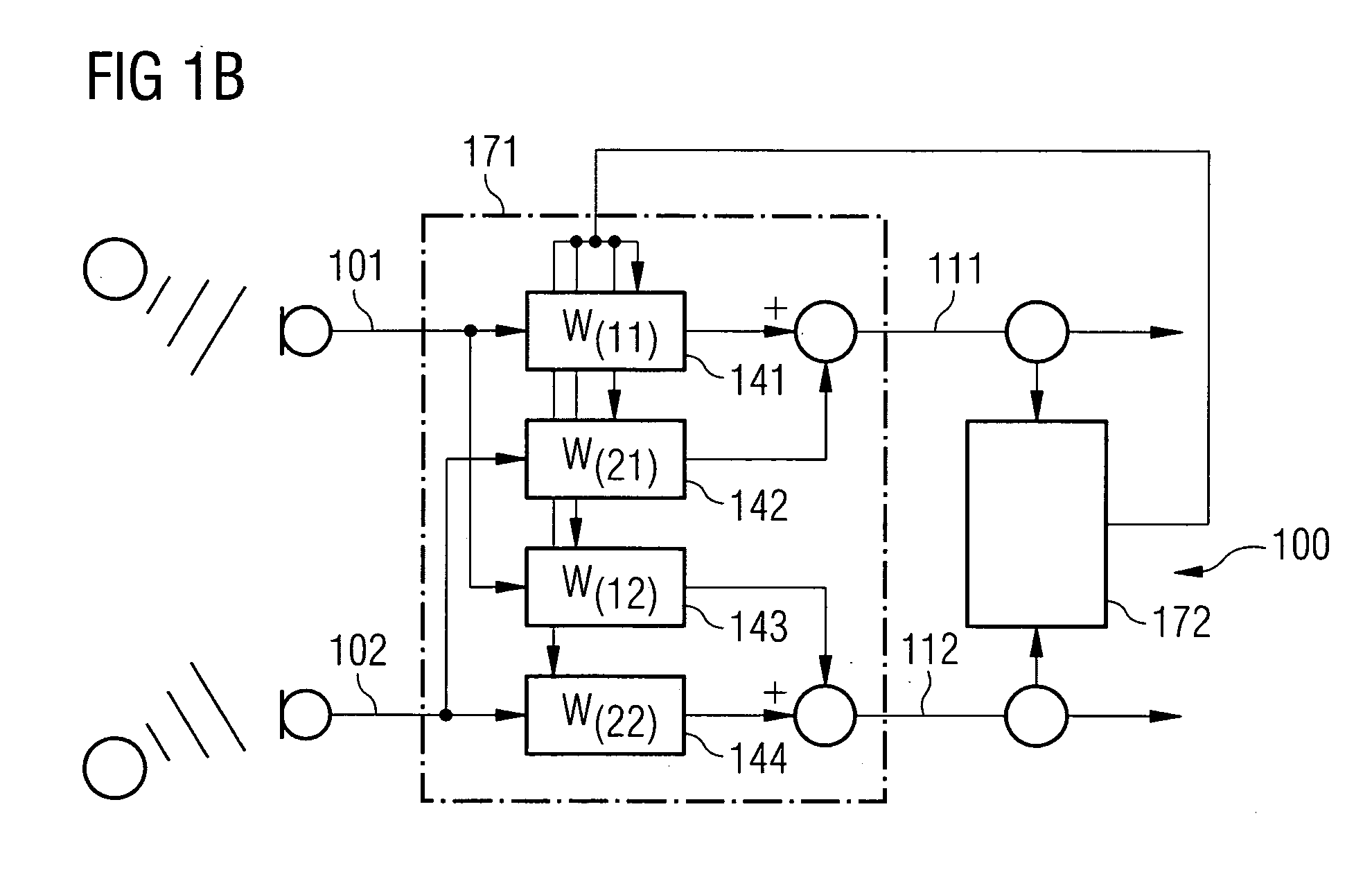Method for signal processing in a hearing aid
- Summary
- Abstract
- Description
- Claims
- Application Information
AI Technical Summary
Benefits of technology
Problems solved by technology
Method used
Image
Examples
first embodiment
[0045]FIG. 2 shows a schematic representation of a first source separation in conjunction with a second source separation according to the present invention. Sound sources generate acoustic signals, which are received by microphones. Here two microphones provide the first input signal 101 and the second input signal 102 both to a first source separation 210 and also to a second source separation 220.
[0046]The first source separation 210 includes a filter module 211 and a correlation module 212. The filter module 211 generates a first output signal 111 as well as an additional first output signal 112 from the first input signal 101 and the second input signal 102 with the aid of a first coefficient set W1. The correlation module 212 continuously determines a first correlation κ1 from the two first output signals 111, 112, which is used to modify the first coefficient set W1 such that the first correlation κ1 is minimized and the two first output signals 111, 112 are thus maximally se...
second embodiment
[0059]According to this second embodiment of the present invention, a third source separation 230 is also provided. Here the third source separation 230 includes a third filter module 231 as well as a third correlation module 232. The filter module 231 generates a third output signal 131 as well as an additional third output signal 132 from the first input signal 101 and the second input signal 102 with the aid of a third coefficient set W3. The correlation module 232 continuously determines a third correlation κ3 from the two third output signals 131, 132, which is used to modify the third coefficient set W3 such that the third correlation κ3 is minimized and the two third output signals 131, 132 are maximally separated. An additional timer module 245 is also provided which resets the third source separation 230 once a certain period of time, for instance a third period of time has elapsed, by the third source separation 230 setting the third coefficient set W3 to an output coeffic...
fourth embodiment
[0064]FIG. 5 shows a further hearing aid 410 according to the present invention. Here the additional hearing aid 410 has the microphones 401 and 402, with the first microphone 401 providing the first input signal 101 and the second microphone 402 providing the second input signal 102 to an additional processing unit 430. The additional processing unit 430 processes the first input signal 101 and the second input signal 102 in order to provide the output signal 404 to the loudspeaker 405 for outputting purposes.
[0065]According to this embodiment of the present invention, the additional processing unit 430 has a process unit 440, which includes processes or modules, like for instance a first module 441, a second module 442, a third module 443 etc. The modules 441, 442, 443 can include for instance a source separation, a comparison module, a timer module, a filter module and / or a correlation module, like was illustrated in conjunction with the embodiments of the present invention descr...
PUM
 Login to View More
Login to View More Abstract
Description
Claims
Application Information
 Login to View More
Login to View More - R&D
- Intellectual Property
- Life Sciences
- Materials
- Tech Scout
- Unparalleled Data Quality
- Higher Quality Content
- 60% Fewer Hallucinations
Browse by: Latest US Patents, China's latest patents, Technical Efficacy Thesaurus, Application Domain, Technology Topic, Popular Technical Reports.
© 2025 PatSnap. All rights reserved.Legal|Privacy policy|Modern Slavery Act Transparency Statement|Sitemap|About US| Contact US: help@patsnap.com



